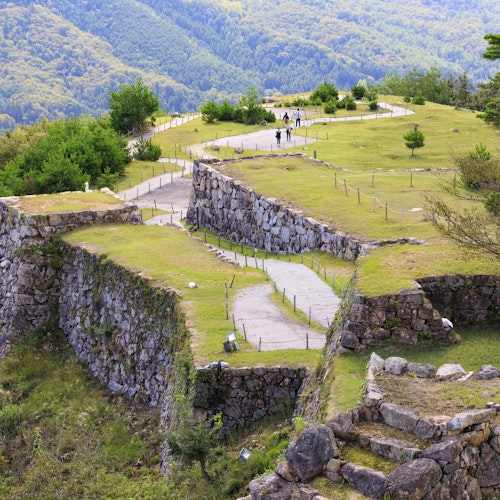
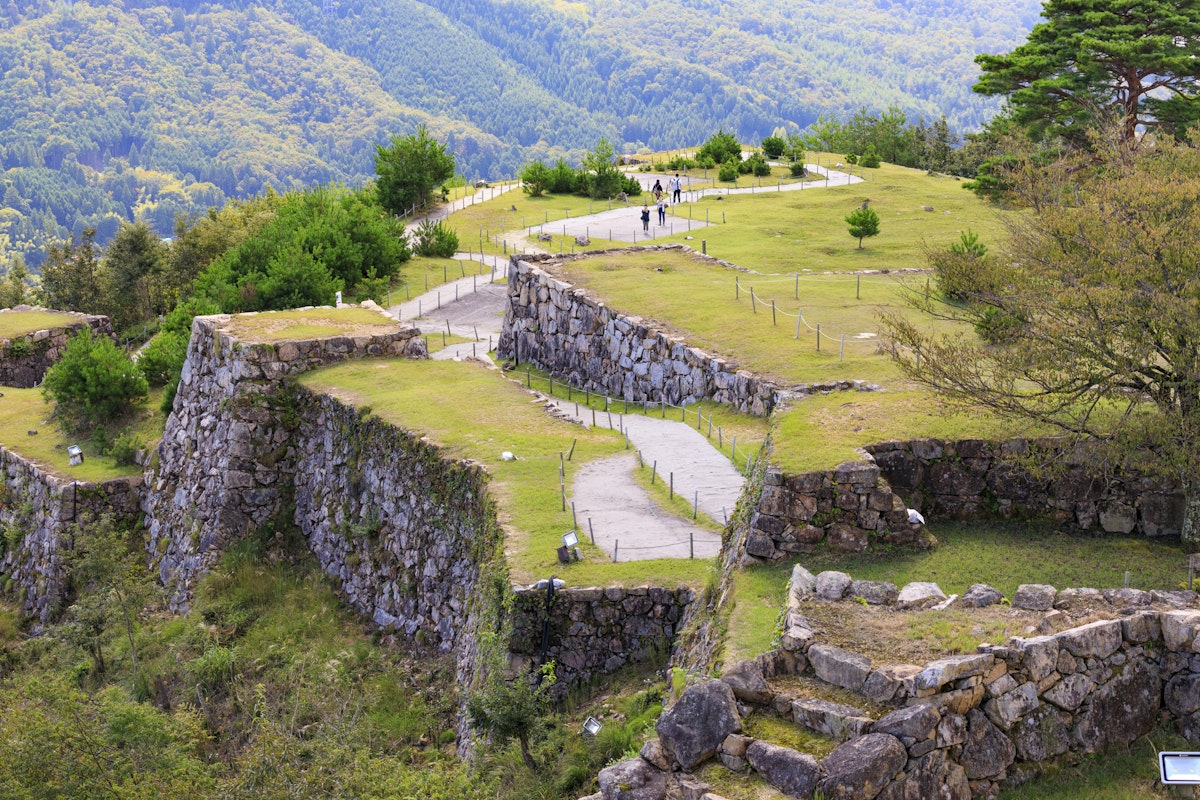
Japan's ancient ruins tell stories of samurai warriors, powerful emperors, and civilizations that flourished centuries ago. From crumbling castle walls to sacred temple remains, these historical sites offer a glimpse into Japan's fascinating past.
If you're planning to explore the country's rich heritage, these ruins in Japan should be at the top of your list.

In the mountains of Hyogo Prefecture stands one of the most photographed ruins in Japan. Takeda Castle, built in 1441 by Yamana Sozen during a period of intense feudal conflict, sits 353 meters above sea level with commanding views over the surrounding valleys. The castle served as a strategic military base for over 150 years until it was abandoned in 1600 following the decisive Battle of Sekigahara that unified Japan under Tokugawa rule.
Today, only the stone foundations remain, but they create one of the most breathtaking scenes among all Japanese ruins. The climb to reach these ruins takes about 40 minutes, and the reward is unforgettable views that stretch across the surrounding peaks and valleys.
Many travelers combine their visit here with cultural tours of the Kansai region to experience both ancient history and traditional Japanese culture.
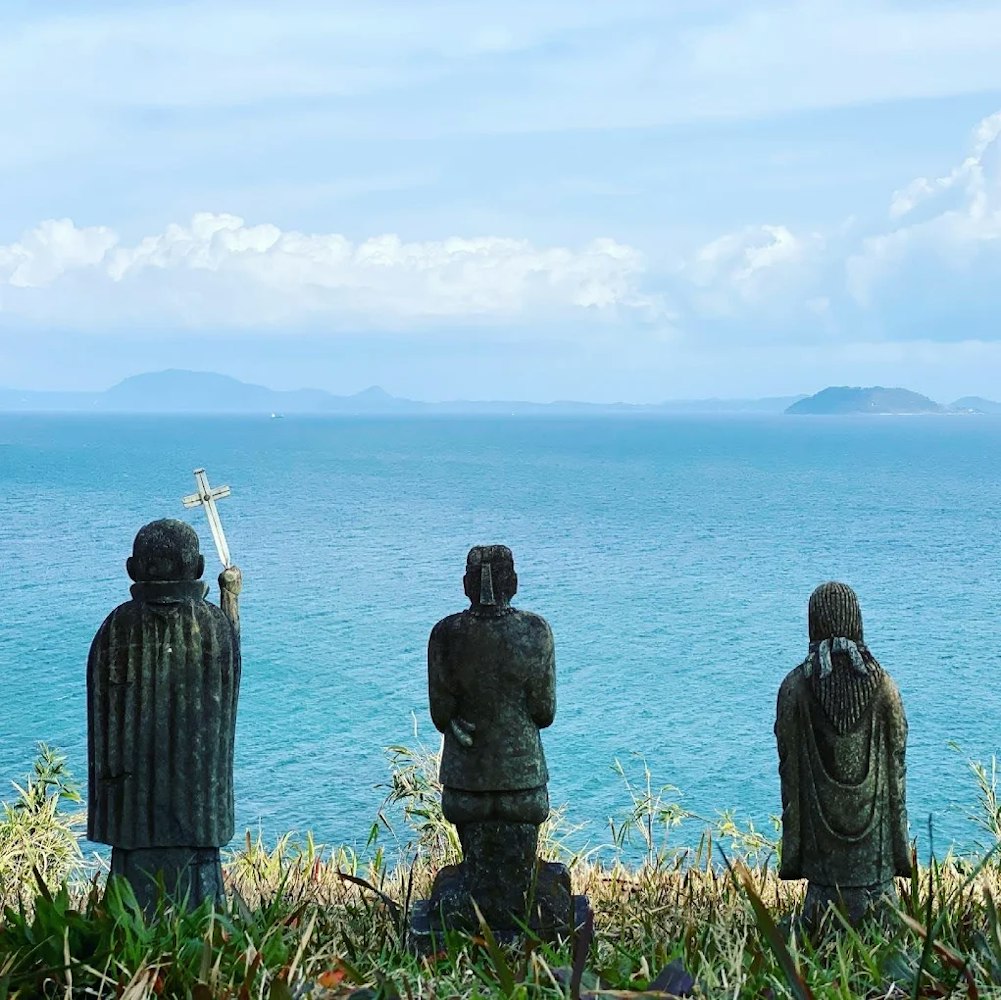
These ruins on the Nagasaki Peninsula carry the tragic history of the 1637-1638 Shimabara Rebellion, when 37,000 Christian peasants and samurai made their final stand against religious persecution. Led by teenage leader Amakusa Shiro, the rebels held out for months before the castle fell, and nearly all defenders were killed.
The ruins cover over 30 hectares with earthen ramparts, stone foundations, and defensive moats. A walking path takes you through the main enclosure, past turret remains and gates, with information panels describing the siege.
The site overlooks the beautiful Ariake Sea, with grass-covered mounds and stone walls creating a haunting atmosphere. A small museum displays artifacts, including Christian religious items, weapons, and everyday objects belonging to the rebels.
Spring wildflowers and autumn colors make the ruins particularly beautiful. Many day tours exploring the Shimabara Peninsula include Hara Castle along with other Christian heritage sites, providing a comprehensive understanding of this unique aspect of Japanese history.

Hidden in Fukui Prefecture's mountains, Ichijodani is perhaps the most archaeologically significant ruin in Japan. The Asakura clan ruled this valley for 103 years until Oda Nobunaga destroyed the town in 1573. The town was buried under soil and vegetation, which perfectly preserved its layout. Excavations starting in 1967 uncovered over 400 building sites, including samurai mansions, temples, shops, and ordinary homes.
Today, you can walk reconstructed streets lined with full-scale replicas of samurai residences and merchant houses based on archaeological evidence. Period furnishings and mannequins in period clothing show scenes of daily life. Beyond the reconstructed area, stone foundations mark hundreds of building sites, and carefully maintained gardens demonstrate the Asakura clan's sophisticated aesthetic.
Hiking trails lead to the mountaintop castle ruins, a steep hour-long climb offering spectacular views over the valley. The site has over 200 cherry trees that bloom in early April, with an annual festival featuring samurai demonstrations and historical reenactments. Autumn brings equally spectacular maple colors. The modern museum displays thousands of excavated artifacts, with excellent English signage throughout.

Nijo Castle in Kyoto, built in 1603 as Tokugawa Ieyasu's residence, is a UNESCO World Heritage site. While the main palace is beautifully preserved with its famous "nightingale floors" that squeak to warn of intruders, sections of the expansive grounds contain atmospheric ruins that speak to its 400-year history.
Parts of the outer walls, guard towers, and secondary buildings remain in various states of preservation, creating a beautiful blend of maintained structures and romantic ruins. The quieter corners with weathered stones and overgrown gardens offer contemplative experiences away from the main palace crowds.
The extensive grounds combine formal gardens, historic buildings, and these more neglected sections that show natural decay. Spring brings cherry blossoms throughout the property, while autumn offers brilliant maple colors. Many Kyoto walking tours include Nijo Castle as part of broader explorations of the city's historical treasures, allowing visitors to experience both preserved and ruined sections of Kyoto's feudal past.

Nakagusuku Castle in Okinawa showcases the unique architecture of the Ryukyu Kingdom that ruled these islands independently until the 17th century. Built in the early 15th century by Lord Gosamaru, the castle sits 150 meters above sea level with views of both the Pacific Ocean and East China Sea.
The ruins consist of six interconnected wards enclosed by magnificent curved stone walls made from carefully fitted limestone blocks that needed no mortar. These walls reach heights of over 15 meters and have withstood centuries of typhoons and earthquakes. The limestone has weathered to a beautiful honey color that glows golden in afternoon light.
Unlike intimidating mainland castles, Nakagusuku incorporates aesthetic beauty as a fundamental design element, with small gardens and reflective water cisterns throughout. This blend of military function and artistic sensibility reflects the Ryukyu Kingdom's cultural identity, which drew from Japan, China, and Southeast Asian influences.
The site gained UNESCO World Heritage status in 2000. Sunset visits are particularly spectacular when the ancient stones radiate warm light against the brilliant ocean. Many Okinawa tours focused on history include Nakagusuku Castle along with other gusuku ruins and traditional villages.
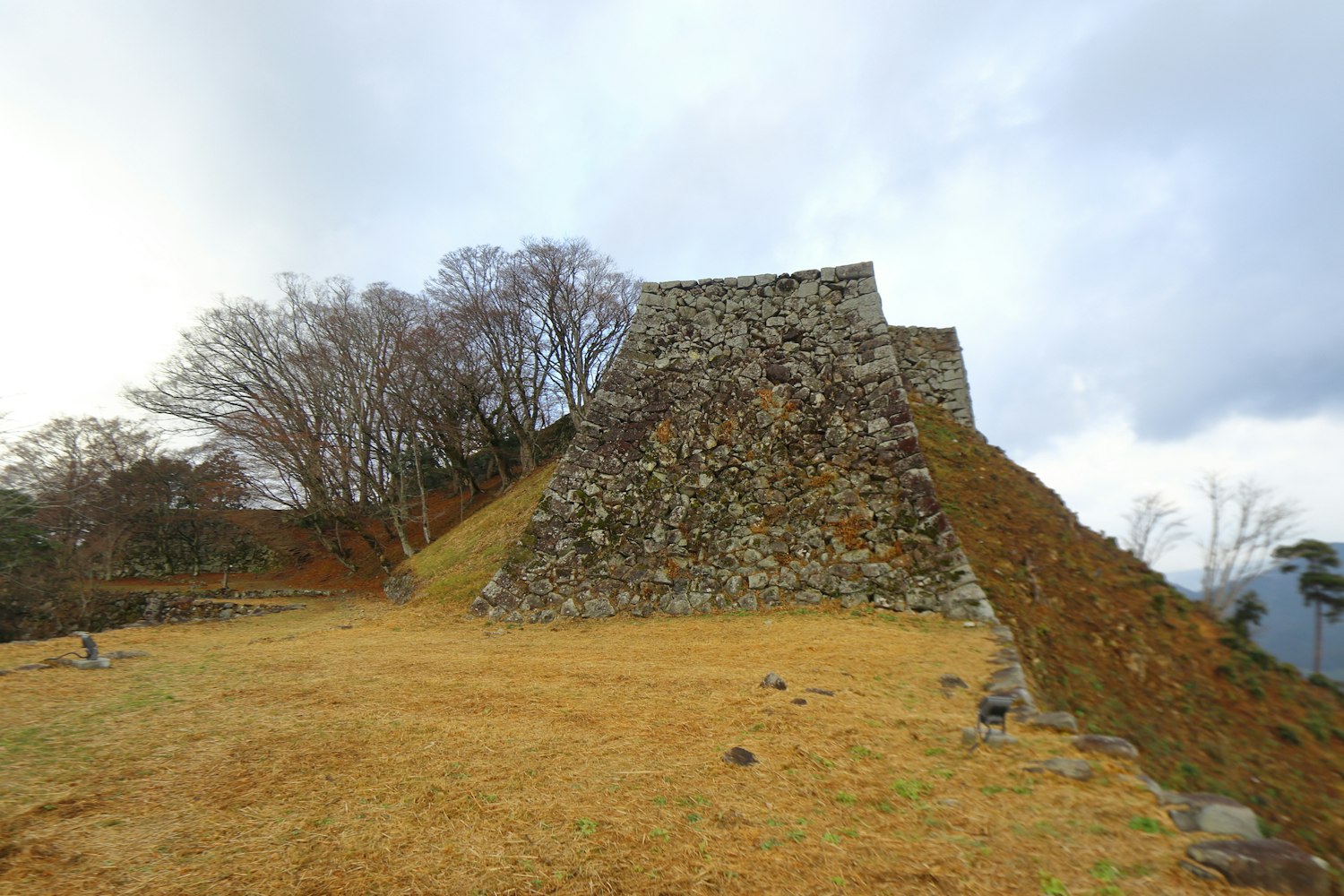
Perched above one of Japan's most charming small towns, Tsuwano Castle ruins combine historical significance with breathtaking scenery. Originally constructed in 1295, the castle was expanded over centuries until becoming one of western Japan's most formidable fortresses. It remained active until 1868, when it was abandoned during the Meiji Restoration.
Most visitors take a five-minute chairlift ride through dense forest to reach the summit, though hikers can follow the original samurai path in 30-40 minutes. At the top, massive stone walls snake dramatically along the ridgeline, with walls reaching 10 meters tall. Multiple enclosures connected by stone gates show sophisticated defensive planning.
The main enclosure offers 360-degree views of surrounding mountains, Tsuwano town below, and rice paddies forming geometric patterns. Spring brings cherry blossoms to the slopes, summer offers lush greenery, autumn creates tapestries of colorful foliage, and winter occasionally dusts the stones with snow.
Tsuwano town itself preserves a beautiful historical district with samurai residences and famous water channels filled with colorful koi. The combination makes this ideal for travelers seeking authentic experiences away from major tourist crowds. Historical tours through the Chugoku region often combine Tsuwano with nearby Hagi, another preserved castle town.
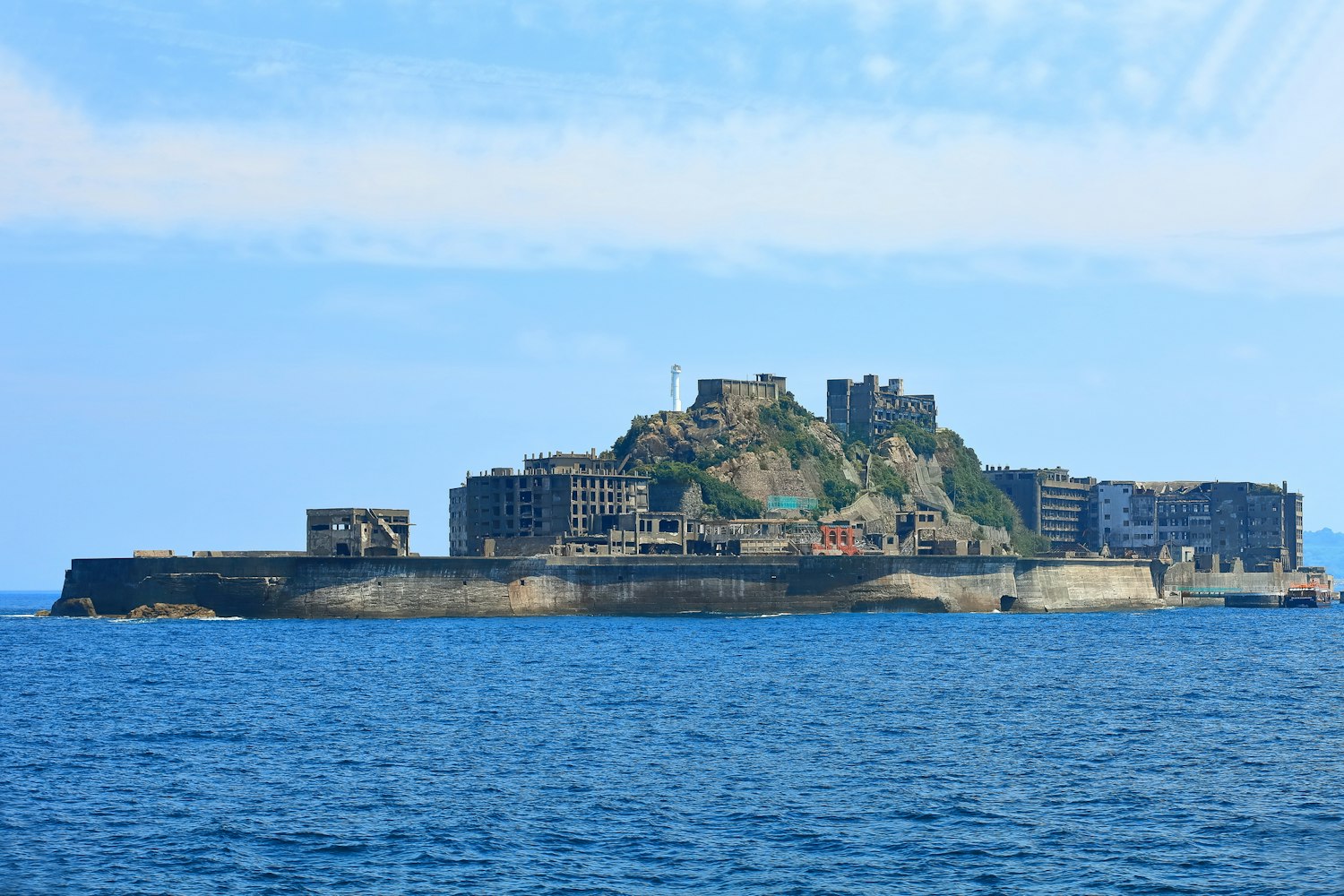
Gunkanjima represents a completely different chapter among Japanese ruins. This tiny island off Nagasaki once housed over 5,000 coal miners packed into Japan's first large concrete apartment buildings. Mitsubishi Corporation developed the island from 1890, with mining operations expanding beneath the ocean floor.
By 1959, Hashima achieved Earth's highest recorded population density with 5,259 people on just 6.3 hectares. The self-contained city had schools, hospitals, shops, a cinema, and rooftop gardens. When the mine closed in 1974, every resident left within months, leaving buildings filled with furniture and belongings.
For decades, the island sat abandoned as typhoons and salt air attacked the structures. Nature has reclaimed much of it, with trees growing from walls and concrete crumbling to reveal rusted reinforcement bars. The apocalyptic landscape is unlike any other ruins in Japan.
The island appeared in James Bond's "Skyfall" and gained UNESCO World Heritage status in 2015. Boat tours from Nagasaki allow limited access to a fortified observation area due to structural dangers. Tours last 2-3 hours, including the journey, with guides sharing stories of daily life. Many Nagasaki day tours combine Gunkanjima with the Atomic Bomb Museum and other attractions.
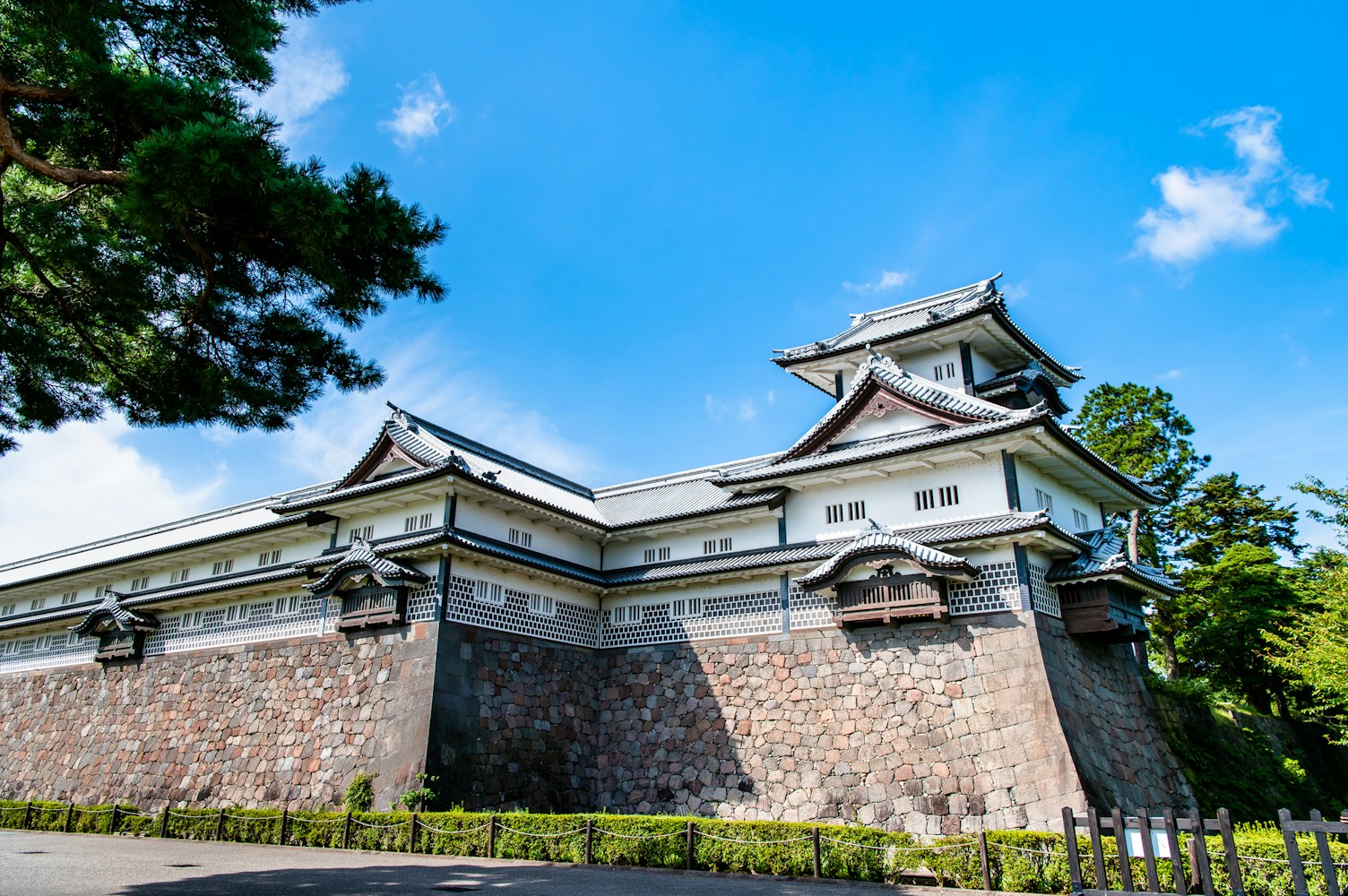
While Kanazawa Castle includes reconstructed buildings, its original stone walls from the late 1500s serve as a living museum of Japanese castle construction techniques. The wealthy Maeda clan ruled here for nearly 300 years, continually improving their fortress and employing the finest stonemasons.
Walking the castle perimeter shows the evolution of construction methods. The oldest walls use rough natural stones fitted together with minimal shaping. Later sections show more carefully shaped stones, while the most recent walls from the early 1600s feature precisely cut stones fitted so tightly you can barely slip a knife blade between them. Information signs explain the different techniques and dates.
The castle suffered numerous fires throughout history, most notably in 1759 when the main keep burned. Wooden buildings were rebuilt, but stone walls remained, accumulating new layers of history. Recent reconstruction of several gates and storehouses using traditional techniques continues the site's evolution.
The adjacent Kenrokuen Garden ranks among Japan's three most beautiful gardens, and the surrounding area preserves samurai and geisha districts. Cherry blossom season in early April and autumn foliage in November are particularly spectacular, with nighttime illumination creating magical scenes.
Cultural tours through the Hokuriku region often feature Kanazawa Castle combined with traditional craft workshops, tea house districts, and local markets. The castle museum offers detailed explanations with good English materials available.
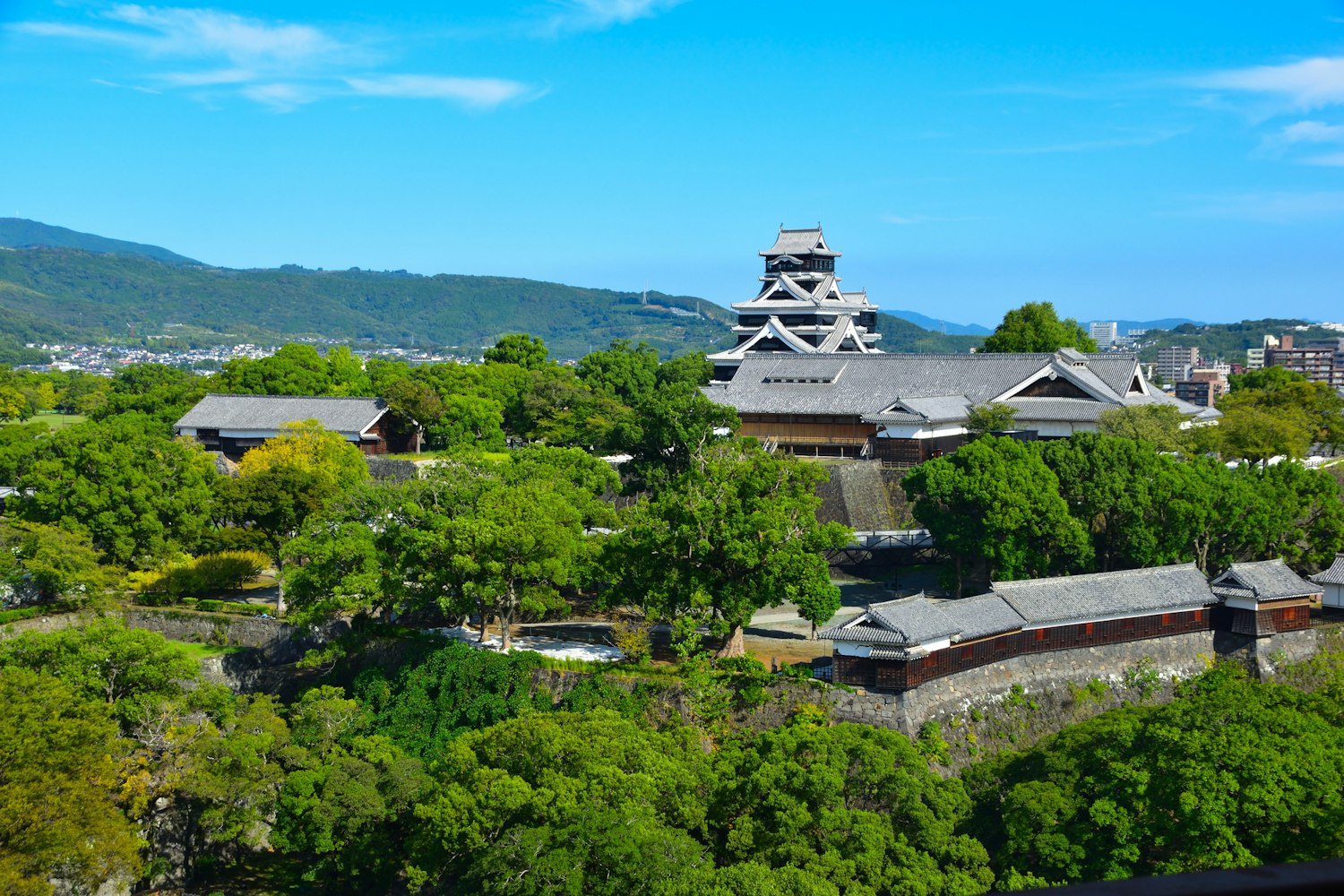
The 2016 earthquakes devastated much of Kumamoto Castle, one of Japan's most impressive fortresses. While restoration efforts continue, parts of the castle remain in ruin, offering a sobering reminder of nature's power.
The sight of collapsed walls and damaged turrets is heartbreaking, yet the ongoing reconstruction project allows visitors to witness traditional Japanese building techniques in action.
The castle's famous "warrior-return" stone walls, designed to thwart invaders with their steep overhanging angles, demonstrate why this was considered one of the three premier castles in Japan. Guided tours explain both the castle's 400-year history and the painstaking restoration process.
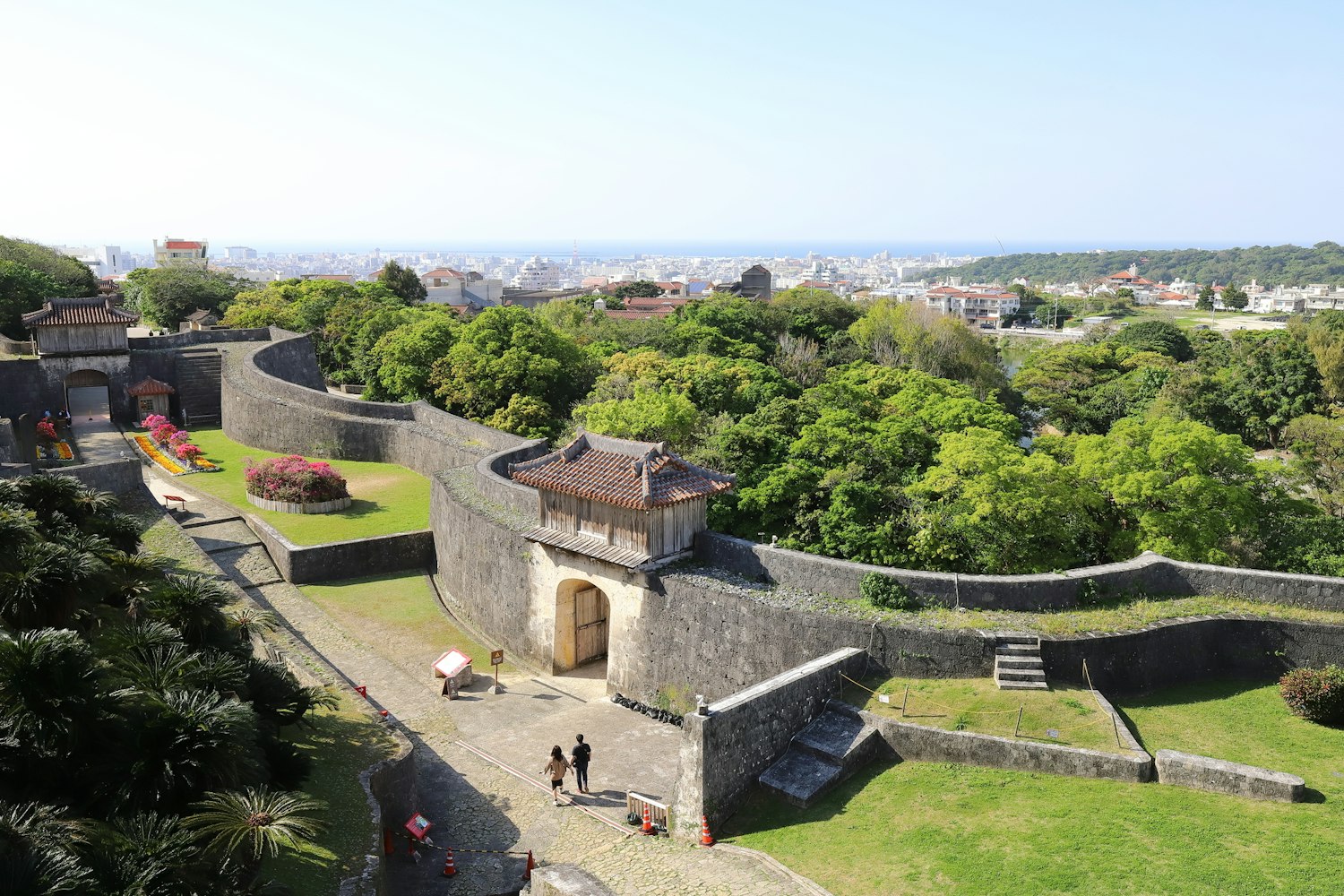
Shuri Castle in Okinawa has been destroyed twice and rebuilt twice, making it a powerful symbol of cultural resilience. For nearly 500 years, this magnificent palace served as the Ryukyu Kingdom's administrative center, representing the peak of Ryukyu cultural achievement by blending Chinese, Japanese, Korean, and Southeast Asian influences.
World War II's Battle of Okinawa completely destroyed the castle in 1945. Beginning in the 1980s, craftspeople painstakingly rebuilt it using historical records and photographs. The reconstructed castle achieved UNESCO World Heritage status in 2000.
Then in October 2019, fire destroyed seven major buildings, including the main palace. Rather than accept defeat, Okinawans immediately began planning the next restoration, scheduled for completion around 2026.
Today visitors encounter ruins in active transition. Stone foundations and distinctive red-tiled walls that survived the fire remain impressive. The famous Shureimon gate, undamaged in 2019, stands as a testament to its former magnificence.
Construction work shows traditional craftspeople employing centuries-old techniques to create massive timbers and elaborate decorative elements. Many Okinawa tours include time at Shuri Castle to understand the island's distinct cultural heritage.
Exploring these historical sites requires some preparation. Most ruins are located in mountainous or rural areas, so comfortable walking shoes are essential. Weather can change quickly, especially at elevated sites like Takeda Castle and Tsuwano Castle. Bringing water and snacks is advisable since facilities may be limited.
Many ruins offer their most spectacular views during specific seasons. Takeda Castle's sea of clouds appears most reliably from late September through early April, while cherry blossom sites peak in early April. Research seasonal conditions before planning your trip to maximize your experience.
Transportation to remote ruins can be challenging without a car. Consider joining organized tours that handle logistics and provide historical context from knowledgeable guides.
